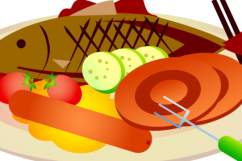There is a lot of interest in ‘eating like a caveman’ or following a Paleolithic meal plan, but what is the real difference between all of these diets?
Paleo, Primal, Stone Age, Caveman, and Paleolithic Diets
Unless you are talking to an extreme, by-the-book dieter, then these diets are all basically the same. Although there are some differences in the original Paleo and Primal diet plans, both of these diets have evolved over time based on new research and studies.
The Paleo diet idea had its start in the 1970s, but many people look to Loren Cordain, a professor and scientist, as one of the most well-known advocates of the diet today. The Primal diet was created by Mark Sisson, author of the Primal Blueprint.
When I asked George Bryant, award-winning Paleo chef and cookbook author, to give his take on the different caveman diets, he had this to say:
The difference between the Paleo and Primal Diets have evolved heavily over the past few years. Now there isn’t really a clear line, it is more of a hazy framework with a few ideas still holding true. Primal people include raw or fermented dairy. Most Paleo people don’t have dairy at all, and occasionally some will use grass-fed butter but otherwise it is avoided.
The other current difference is the inclusion of sweeteners in recipes and drinks. Paleo people tend to be a little more strict, sticking to the common ground that both diets share which focuses on eating lots of vegetables, (sustainably sourced and raised) meats, fish, poultry with occasional fruits, nuts and seeds. Primal people occasionally have their dark chocolate, allow soy minimally, and have some red wine, white potatoes and rice in small amounts.
The video above from Paleo Living gives you a longer explanation to the close similarities and few differences in the Primal and Paleo diets.


